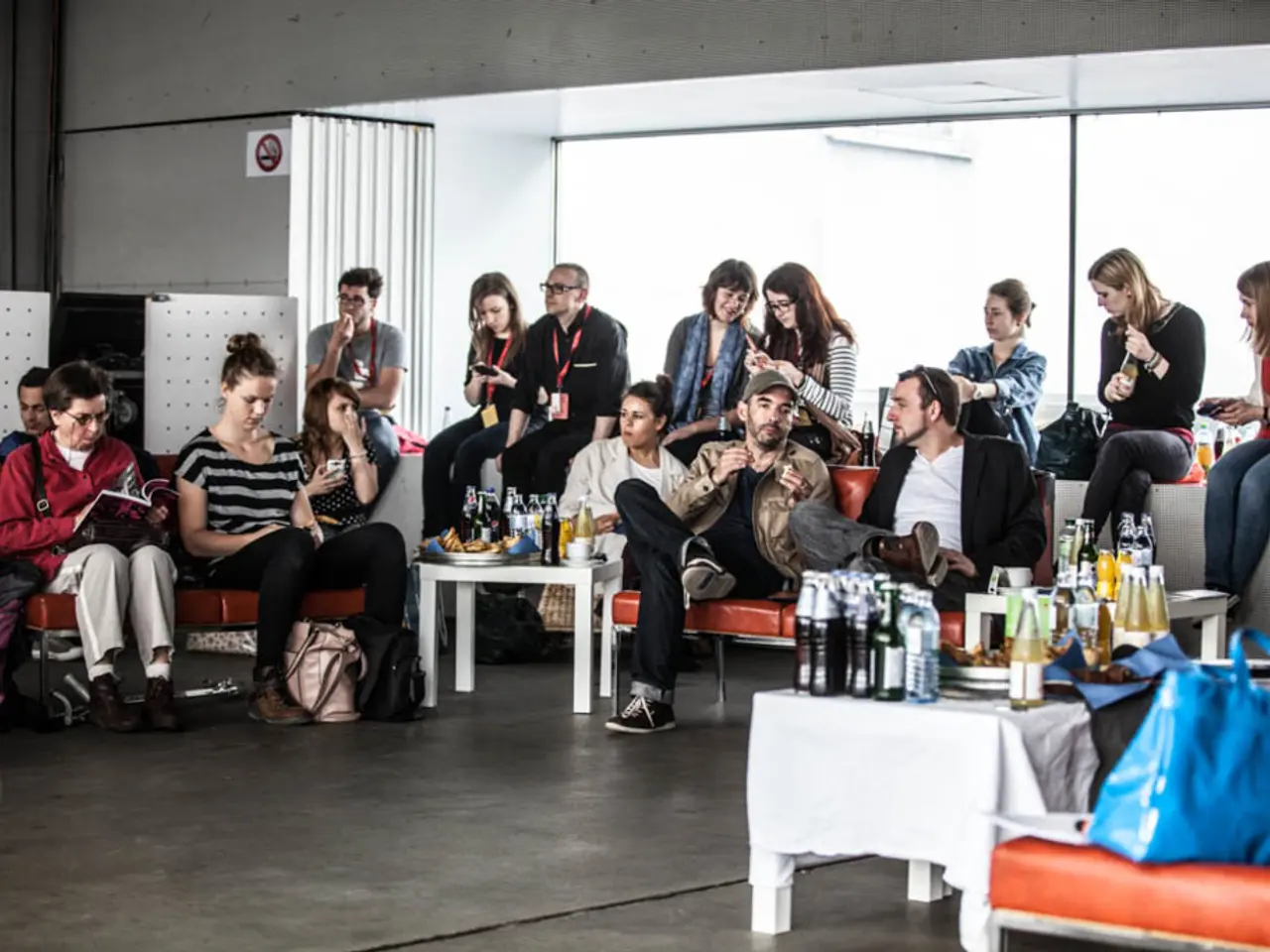Communicating Effectively: The Significance of Well-Defined Visual Signals in the Workplace
In today's dynamic work environments, a comprehensive visual communication strategy is proving to be a game-changer. This approach, designed to improve information retention, enhance employee engagement, and foster clearer messaging, is redefining the way businesses operate.
One of the key benefits of visual communication is improved employee engagement and information retention. By leveraging the "Picture Superiority Effect," visuals make information more memorable compared to text alone, reducing confusion and making messages easier to understand. This enhanced comprehension leads to better employee engagement and performance.
Clearer and more efficient communication is another advantage. Visuals can convey complex organizational structures, processes, and messages quickly, saving time and reducing misunderstandings. They enable faster sharing of ideas and ensure consistent brand and message delivery across different teams and locations.
Inclusive communication is another significant benefit. Visuals, combined with plain language and culturally adapted content, help bridge language barriers and accommodate diverse literacy levels. This fosters an inclusive environment where employees across various regions and backgrounds feel connected and valued, which enhances collaboration in multinational environments.
Visual communication also offers cost savings and operational efficiency. Tools like webinars and digital signage eliminate the need for travel and in-person meetings, cutting costs while promoting real-time engagement. Clear visual communication aligns goals and reduces wasted effort caused by miscommunication, accelerating decision-making in complex operations.
In the realm of hybrid and remote work environments, visual content is well-suited for digital platforms. Digital signage and video enable asynchronous and on-the-go access to key messages, helping maintain connection and engagement with remote employees.
Moreover, visual communication boosts creativity and innovation. Inclusive, clear communication through visuals enables employees from diverse backgrounds to share ideas confidently, contributing to better decision-making and faster product development.
Visual cues are not just limited to offices and meeting rooms. They play a crucial role in various workplaces, from hospital emergency departments relying on whiteboard cues for rapid patient triage, to kitchens posting detailed prep diagrams to facilitate smooth dinner rushes. They are also invaluable in chaotic work environments, directing essential logistical flows and controlling inventory routes in warehouses packing with seasonal goods.
Safety is another area where visual communication shines. Signs forbidding cell phone use in sensitive zones establish unequivocal rules, while icons elicit peer audits for slip/trip/fall prevention. Vivid floor markings define dangerous areas, and motivating safe behaviors, thoughtfully designed visual communication can encourage a proactive safety culture.
Workplace hazards that demand strict protocols often have visual hazard wall signs for immediate attention and proper precautions. A fiery explosion icon, for instance, alerts staff to flammable contents. In workplaces today, which often encompass staff with various backgrounds, languages, and communication needs, effective visual communication ensures that everyone perceives and appropriately responds to workplace conditions, keeping operations smooth.
In conclusion, a well-planned visual communication strategy in diverse, complex workplaces enhances understanding, inclusion, engagement, and efficiency, directly supporting better business outcomes and workforce empowerment. A thoughtfully maintained visual communication system keeps the workplace humming, fostering a culture of safety, productivity, and collaboration.
- By implementing a visual communication strategy, organizations can fosters clearer and more efficient health-and-wellness practices within the workplace, such as using visual cues to promote peer audits for slip/trip/fall prevention or using vivid floor markings to define dangerous areas, promoting a proactive safety culture.
- Integrating visual communication in various workplaces, such as hospital emergency departments, kitchens, and warehouses, contributes to improved employee engagement and performance by making complex processes and messages more accessible and memorable, thereby enhancing overall health-and-wellness and workplace-wellness.







